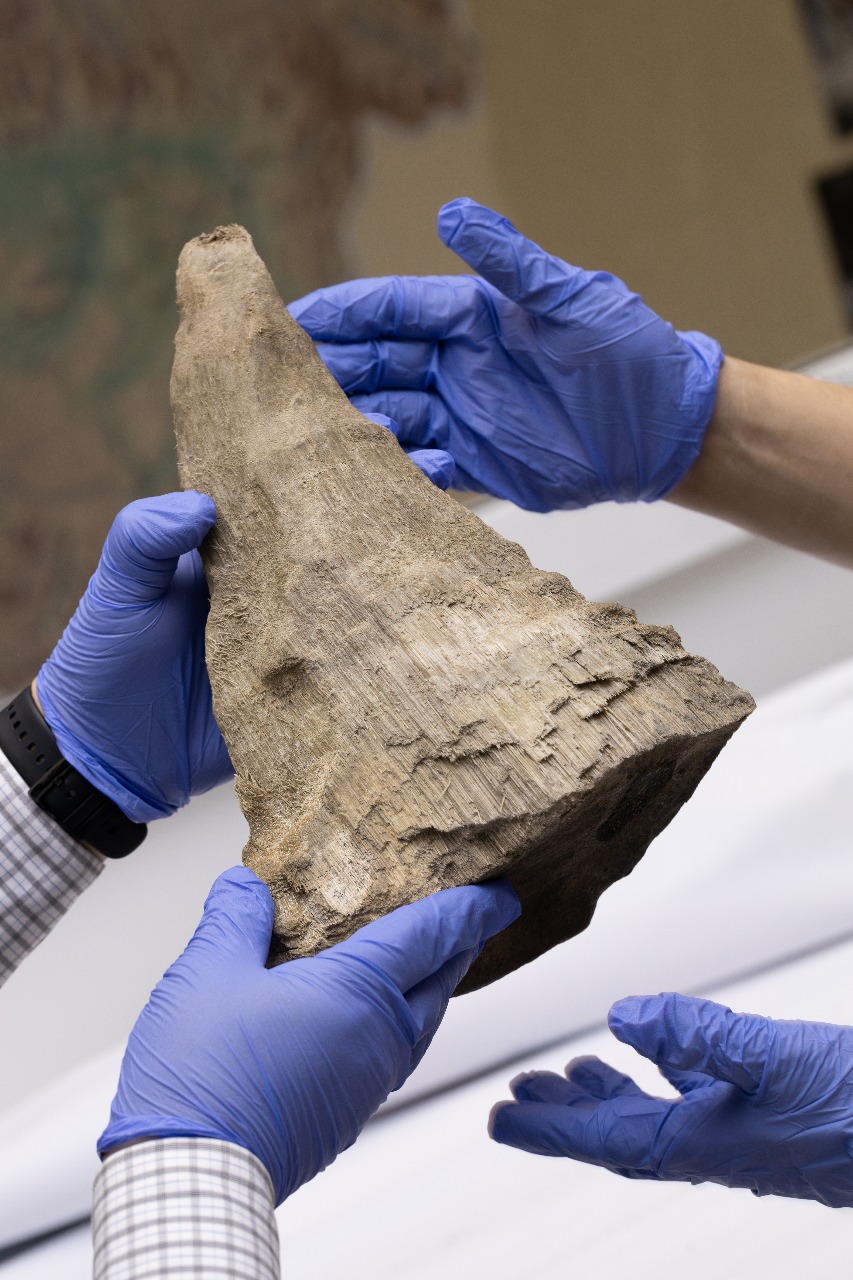Siberian gold miners accidentally find ancient woolly rhino mummy with horn and soft tissues still intact
Mummified woolly rhino discovered by miners in Russia's Sakha Republic to be fully excavated in the coming months, as researchers begin studying its intact horn.

Gold miners in Siberia recently unearthed a mummified woolly rhino carcass with its horn and soft tissues still intact. The miners in the Sakha Republic, came across the carcass while excavating the site of a new quarry.
Photos of the remains, found in the Oymyakon District, appeared on the Russian social media site Telegram on Aug. 2.
Novo rinoceronte-lanudo fóssil encontrado em ótimo estado de conservação!https://t.co/useXIqKva2August 5, 2024
Following the discovery, researchers at the North-Eastern Federal University (NEFU) in Yakutsk visited the site and recovered the rhino's horn. The rest of the mummified woolly rhinoceros (Coelodonta antiquitatis) will be excavated in the coming months, according to a translated statement from the NEFU.
"This is a truly unique find that will allow us to study the history of the region, its ancient fauna, climate and geological conditions in more depth," Anatoly Nikolaev, rector of the NEFU, said in the statement.
The permafrost in Siberia provides ideal conditions for the preservation of ancient creatures. The cold conditions mummify the remains, normally dehydrating soft tissues and locking them away in a frozen "time capsule."

The discovery of soft tissue is rare and allows scientists to get a far better insight into the life of the animal and the environment at the time it died compared to skeletal remains. It also provides a better opportunity to extract ancient DNA from the remains.
Related: 'Prehistoric' mummified bear discovered in Siberian permafrost isn't what we thought
Sign up for the Live Science daily newsletter now
Get the world’s most fascinating discoveries delivered straight to your inbox.
Maxim Cheprasov, senior researcher and head of the laboratory of the NEFU Mammoth Museum, said this is only the fifth time scientists have found a woolly rhino with intact soft tissues. "Until today, there was no such rare find in the collection of the Mammoth Museum," he said in the statement. "In the modern history of NEFU, this is the first such find."
Woolly rhinos mainly lived during the Pleistocene epoch (2.6 million to 11,700 years ago), first appearing about 300,000 years ago across northern Eurasia. As the last ice age ended, their range contracted until they only inhabited parts of Siberia — eventually going extinct about 10,000 years ago as a result of the changing climate and human activity.
NEFU researchers plan to study the horn before the rest of the remains are excavated. "According to morphological parameters, it belonged to a mature individual," Cheprasov said. "The exact biological age and sex of the animal will be determined after a comprehensive study of the carcass itself."
The woolly rhino discovery is one of several projects at the NEFU to learn about the ice age megafauna of Siberia. In June, researchers undertook a necropsy (animal autopsy) of a 44,000 year old mummified wolf pulled from the permafrost in Republic of Sakha.

Hannah Osborne is the planet Earth and animals editor at Live Science. Prior to Live Science, she worked for several years at Newsweek as the science editor. Before this she was science editor at International Business Times U.K. Hannah holds a master's in journalism from Goldsmith's, University of London.










